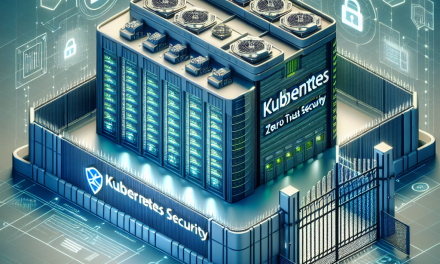Kubernetes has transformed the way organizations deploy, manage, and scale applications in today’s cloud-native landscape. Central to Kubernetes’ revolutionary design is the concept of container runtimes, which facilitate the execution and management of containerized applications. As the ecosystem around Kubernetes has matured, so too have the container runtimes that underpin it. In this article, we’ll explore the evolution of Kubernetes container runtimes, their key features, and what the future may hold.
The Birth of Kubernetes and the Need for Container Runtimes
Kubernetes emerged in 2014 as an open-source project initiated by Google, built upon their experience with container orchestration systems like Borg. Initially, Kubernetes relied heavily on Docker as the primary container runtime, which provided a powerful and flexible way to build and run containers. However, as organizations adopted Kubernetes at scale, the limitations of using Docker solely as a runtime began to surface, paving the way for a more extensible approach to container execution.
The Container Runtime Interface (CRI)
To address the growing need for more diverse container runtimes, the Kubernetes team introduced the Container Runtime Interface (CRI) in 2016. CRI serves as a standardized interface between Kubernetes and different container runtimes, allowing developers to plug in their preferred runtime without needing Kubernetes itself to change significantly. This extensibility has opened the door to a variety of container runtimes to coexist and be utilized within the Kubernetes ecosystem.
Evolution of Container Runtimes
1. Docker
Although Docker is not a standalone runtime in the modern Kubernetes context, it holds historical significance. Its ease of use and extensive tooling ecosystem allowed teams to effectively develop and test containerized applications. Docker remained the default choice for many Kubernetes users until the introduction of CRI.
2. containerd
Recognizing the need for better performance and integration, the containerd runtime was created as a lightweight and more efficient container management solution. Docker itself evolved to use containerd for its core operations. In 2017, the CNCF (Cloud Native Computing Foundation) accepted containerd as an incubating project, leading to its rapid adoption as a preferred runtime for Kubernetes clusters where performance was paramount.
3. CRI-O
With the rise of OpenShift and the Red Hat community, CRI-O emerged as another lightweight alternative to containerd. CRI-O was specifically developed to work with Kubernetes and aimed to provide a simple implementation of the CRI. It focuses on enabling Kubernetes to use OCI (Open Container Initiative) containers while ensuring a reduced attack surface and better integration with Kubernetes APIs.
4. gVisor
Security concerns around running multiple containers on the same host led to the advent of gVisor, a container runtime developed by Google. Unlike typical runtimes, gVisor acts as an intermediary between the containerized applications and the host kernel, providing an additional layer of security. This makes it particularly appealing for organizations that require stringent isolation between workloads.
5. Kata Containers
Kata Containers blend the performance of containers with the security isolation of virtual machines. By leveraging lightweight virtual machines for running containers, Kata Containers offer a compelling solution for workloads that must adhere to strict security compliance. This innovative approach allows organizations to maintain the speed and efficiency of containers while achieving the isolation benefits of VMs.
Kubernetes and the Future of Container Runtimes
As Kubernetes continues to evolve, so too will the container runtimes that support it. The emphasis on flexibility, performance, and security will likely drive the development of new runtimes with varying characteristics to address specific use cases. We can also expect to see more innovations in standardizing APIs and increasing interopability across runtimes, potentially simplifying the container ecosystem further.
In addition, with the rise of edge computing and serverless architectures, the demand for systems that can efficiently manage container lifecycles in resource-constrained environments will grow. The emergence of lightweight runtimes designed for these specific scenarios will be crucial for Kubernetes’ continued adaptation.
Conclusion
The evolution of container runtimes is a fundamental aspect of Kubernetes’ growth and adaptability. From the early reliance on Docker to the diverse ecosystem of runtimes available today, the advancements in container technology have made Kubernetes more versatile, secure, and efficient. As we look to the future, the importance of having a robust container runtime landscape will only continue to increase, reinforcing Kubernetes as a bedrock of modern application infrastructure.
In our ever-evolving tech world, staying updated with the latest developments in Kubernetes and container runtimes is vital for enterprises looking to embrace cloud-native solutions. WafaTech is committed to keeping you informed about these changes and their implications for your organization’s digital transformation journey.




